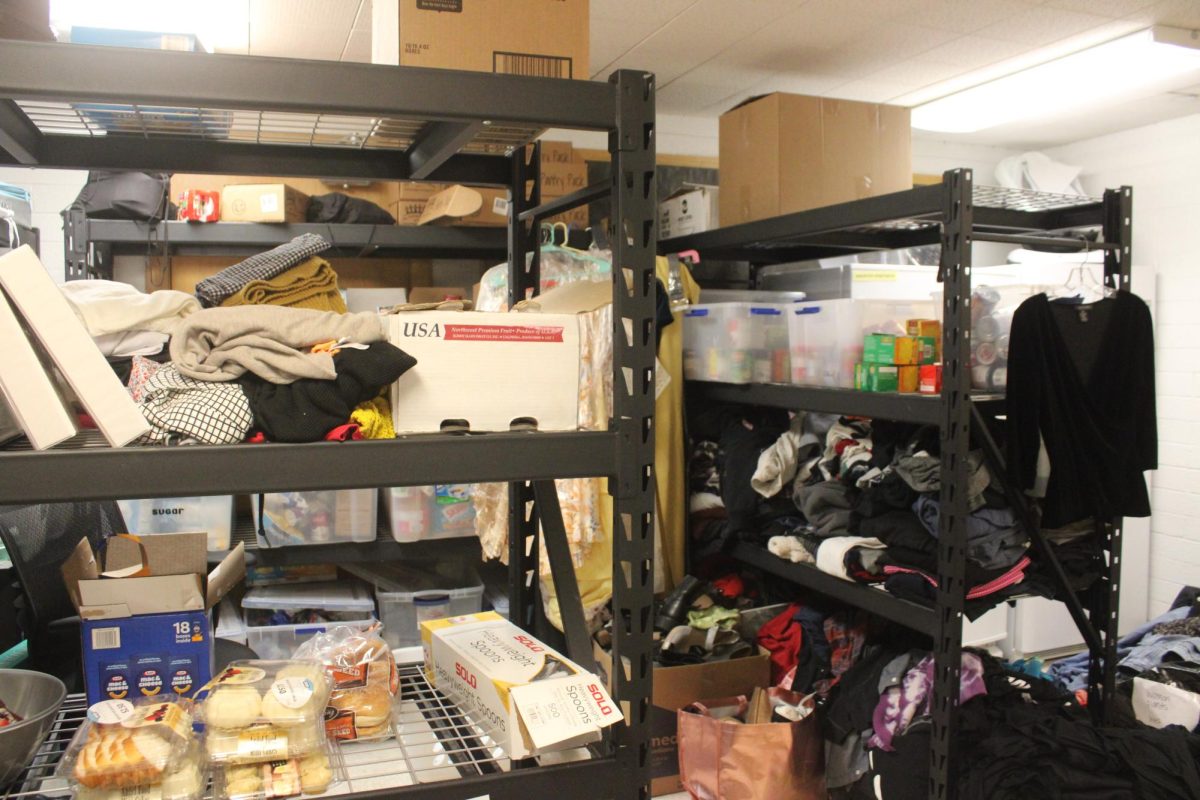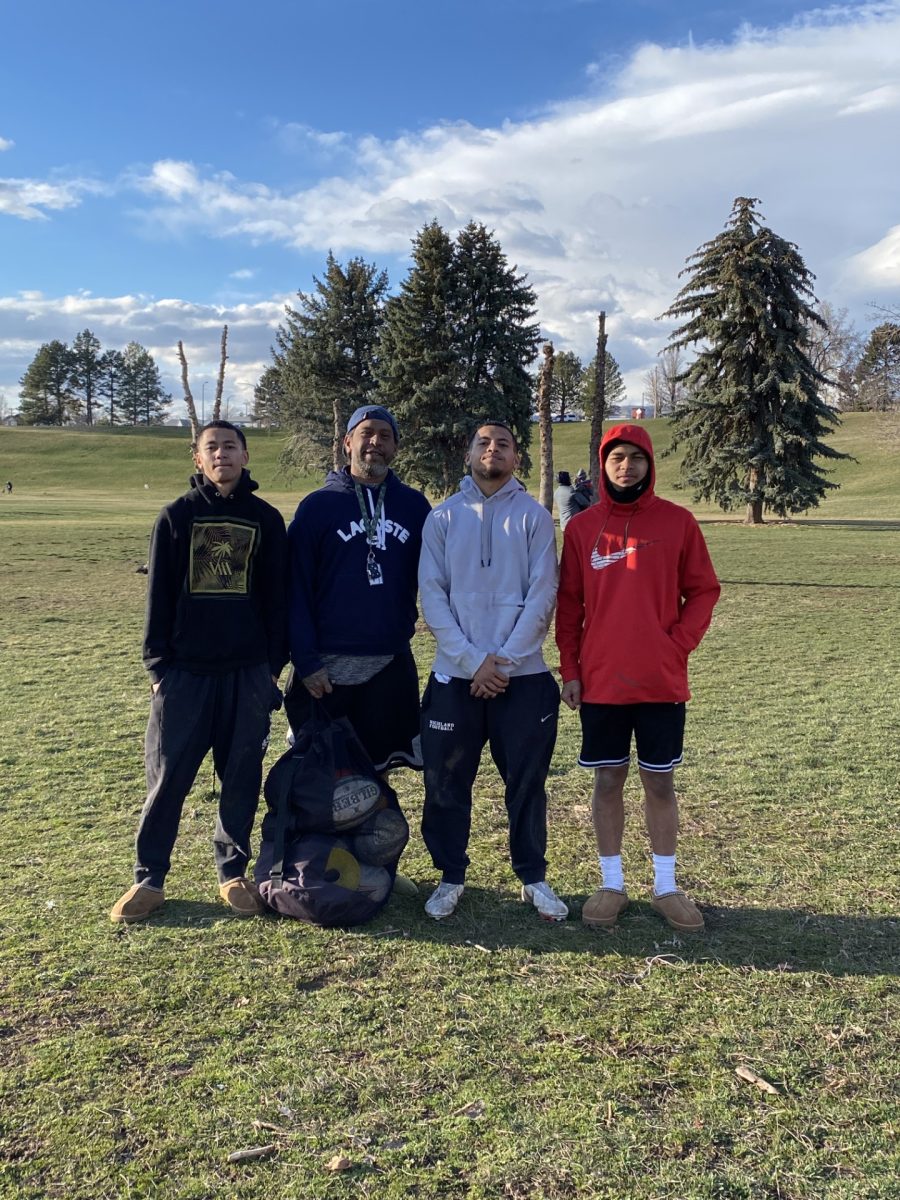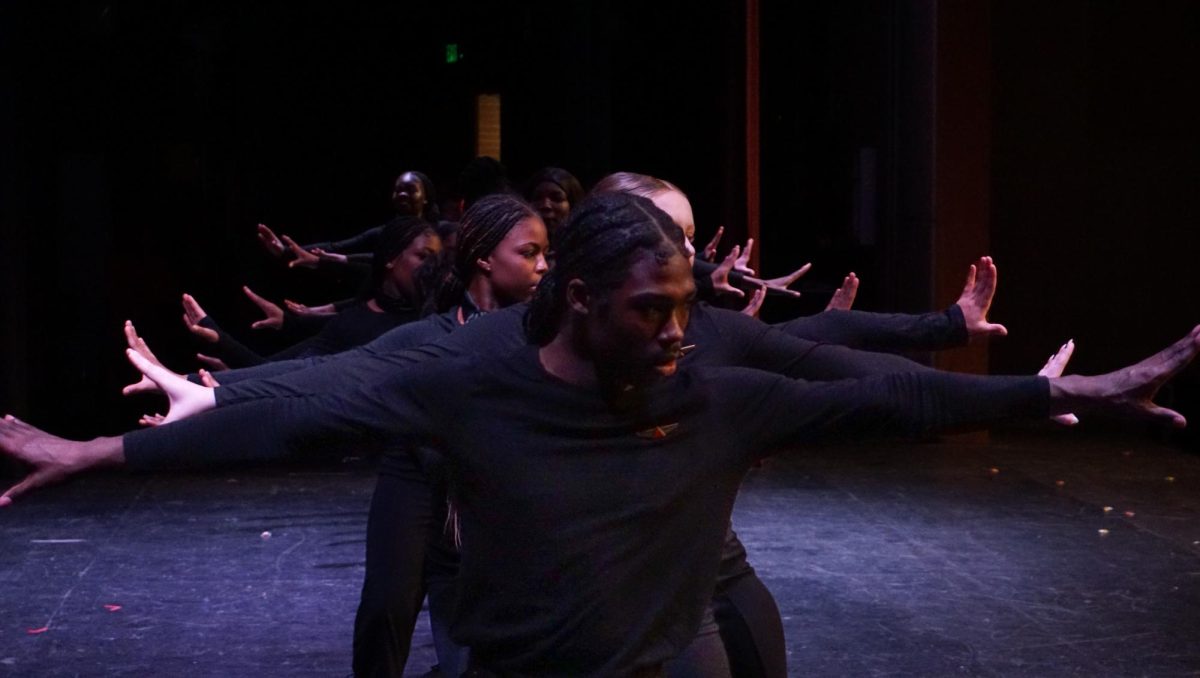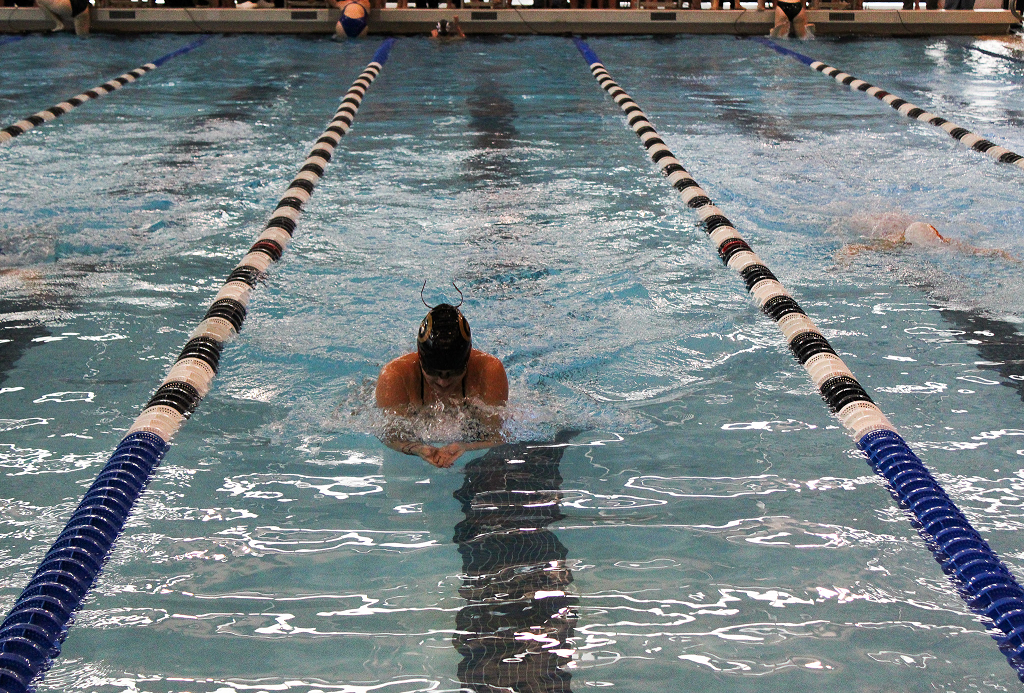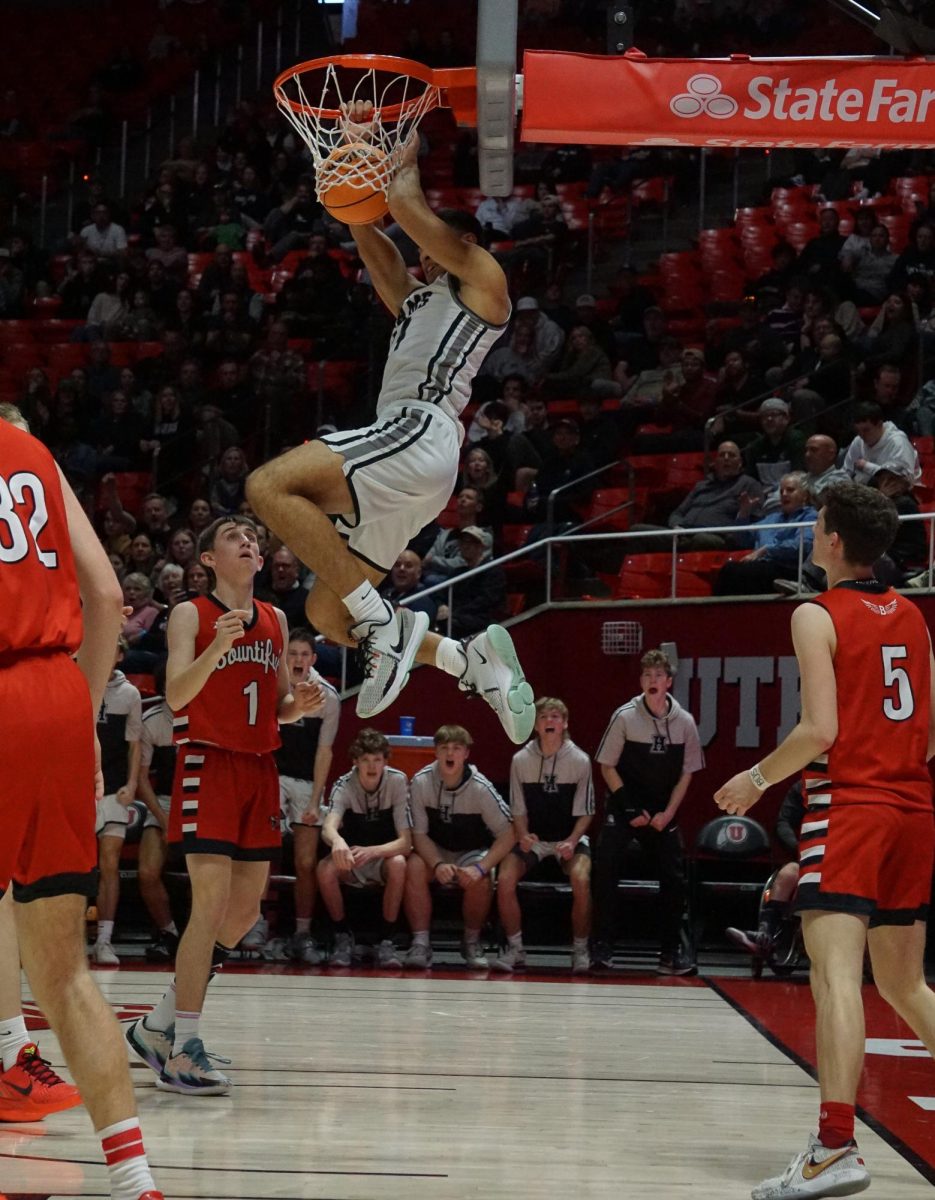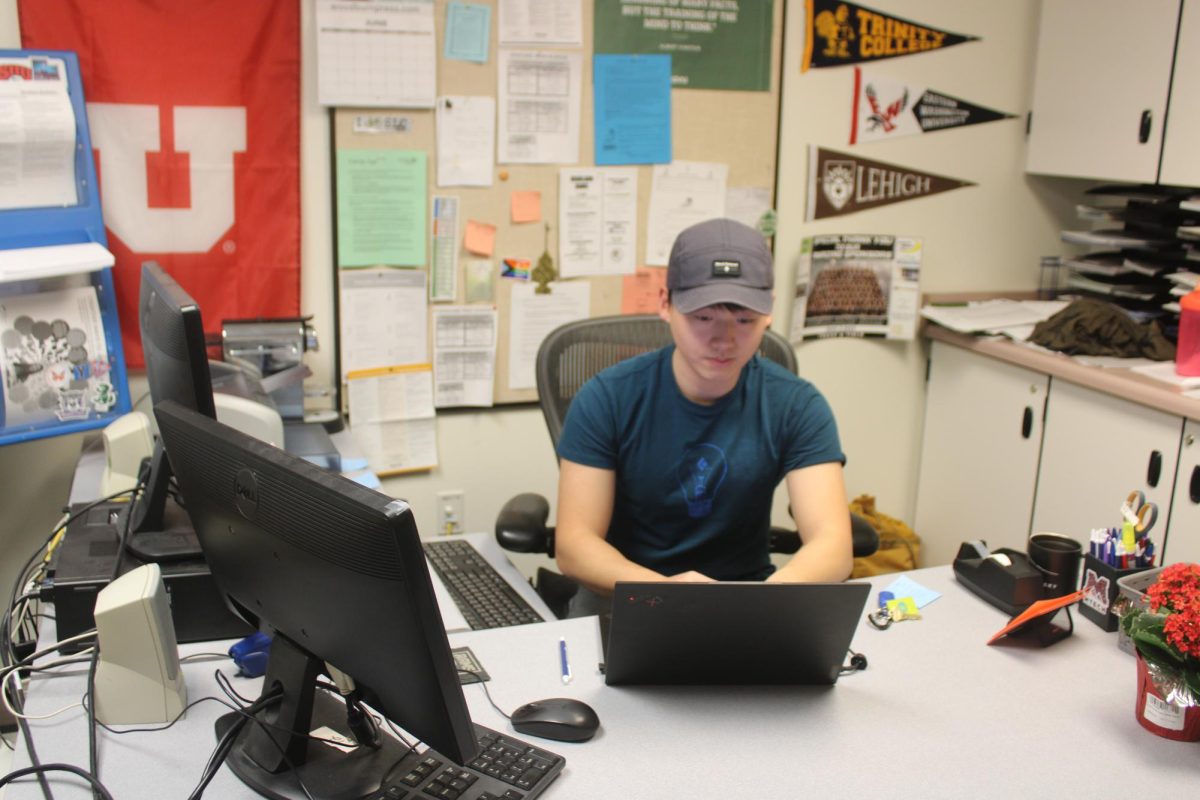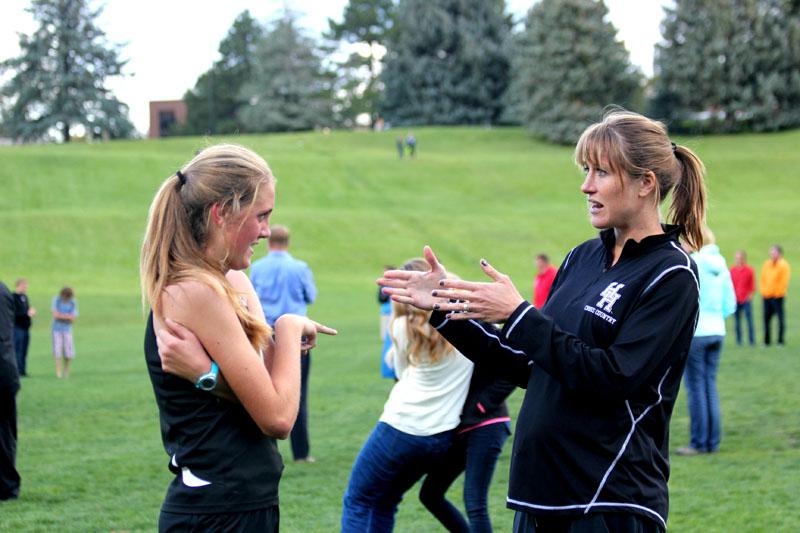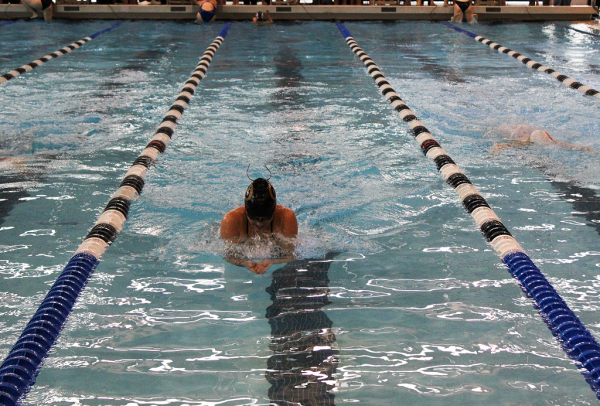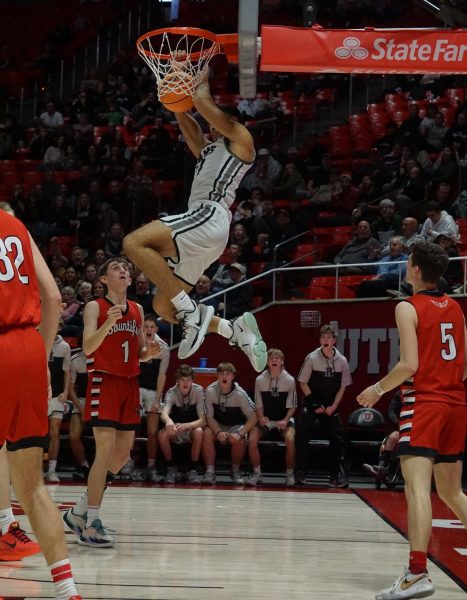New Cross-Country Coach Brings Intensity To Highland
Elizabeth Cook (left) speaks with assistant coach Kassi Harmon
November 10, 2014
Highland assistant cross country coach Kassi Harmon knows this well, and will not let pain or injury hinder the potential of the runners she coaches.
In fact, at many season cross-country meets, Harmon can be spied running from point to point behind her athletes, giving them their times and boosting their mental stamina. She also drives around Sugarhouse Park in her car, following her athletes around the course.
“She was driving alongside the course screaming at me,” senior Jessica Nani breathlessly exclaimed after finishing her race.
While Harmon’s coaching style may not be entirely orthodox, it is effective. Before a race, she can be seen with a knot of students eager to run fidgeting and stamping in place around her. Their focus is intent as she encourages, warns and offers last-minute advice about pacing. There must be some strong admiration among a group of nervous, sweaty teenage boys to get them to fall silent and soak up Harmon’s wealth of expertise.
“Running is a mental game and Kassi excels at that. She’s a competitive racer.” Senior Margaret Watkins shared.
She is quite the accomplished athlete. An Olympic-standard athlete, in fact.
Her event was the steeplechase. The Olympic standard of competition is strides and strides from the every day. And the steeplechase is leaps and leaps from simply running. The event resembles the horse race of the same name, and is a 5K race involving seven-and-a-half laps on the track. The track is littered with 28 hurdles and seven water jumps, which must be cleared succinctly.
In 2004, Harmon stepped up to compete in the steeplechase on the track in Sacramento, CA. The 2004 Olympics did not hold a steeplechase event that year, but they did hold trial races to honor athletes like her who had qualified and trained so rigorously to do so. The race begins. After putting seven laps behind her, and 150 meters ahead, she clears a hurdle, and then a water pit. But this is not like the thousands of times she has practiced this
“On the last water jump I landed poorly, and my leg gave out on me…I thought I sprained it and I still had another jump to go,” she said.
“At the end I basically collapsed.”
No hints of anger, animosity or even regret are present when she relates.
She finishes the race in second place.
The painful foot was extremely swollen and it was discovered that the navicular bone was broken, and the ankle itself sprained. Running such a race is physically trying, let alone clearing the finish line in second place with an injury to a part of the body that is so vital to running.
The second place is commendable, but in light of two such variables, her place looks more and more miraculous.
Harmon’s years of training and experience led her to this moment.
As a student at Provo High School, she decided to focus solely on running track and cross-country. She was mainly recognized as a “middle-distance” runner, but also ran the 100-meter. She won four letters in cross-country, won the Utah 4A state titles in cross-country as a junior and senior, and won state championships in track.
She went on to attend Brigham Young University, competing in the 1500 as a freshman and racing the steeplechase in her second year.
She describes the steeplechase as similar to a horse-race, and calls it a very “injury-prone” event. It is no doubt a feat. The steeples are stable and span three lanes of the track, unlike the traditional hurdles that allow flexibility.
She trained under BYU cross-country head coach Patrick Shane, who the close-knit team considered to be a “father figure” of sorts. His training is something that was impressed upon her.
“I use a similar type of training pattern that I got in college,” she said about the method with which she approaches coaching her runners from Highland.
These runners would do well to listen to Harmon, who has managed to push past pain in competition.
Many have, and their adherence to her coaching techniques led the girl’s team to a second-place ranking in the Region competition earlier this month.
The steeples are not the only hurdles Harmon has had to clear, and continues to approach in her life. Two months after competing in the trials, she was run over by a trailer while riding her bike, resulting in a broken hip. She has not encountered any other running-related injuries, but continues to train to compete in 5K races and half-marathons. One of which she ran just four months after giving birth to her first child in 2012.
“For Kassi, family comes first, and that sets her apart from a lot of other stellar athletes” Watkins said about Harmon.
She is the mother of a 2-½-year-old daughter, with another baby girl on the way, and has a husband in his third year of medical school at the University of Utah. She is a hiker, biker, nature-lover, wife, mother, and of course runner. And an extremely good one at that.
Cross country often seems to carry a stigma. Students think they have to be the fastest, strongest, and the very best at running to join the team. However, Harmon calls it a sport that everyone can do.
“The more you run the better you get, and the better you get, the more fun it is,” Harmon said.
The cross-country team does not make cuts, and accepts anyone who is
Elizabeth Cook (left) speaks with assistant coach Kassi Harmonwilling to take on the challenge.
Watkins has joined the team, and has had the opportunity to work closely with Harmon.
“Kassi is incredible. Sometimes she runs our entire workout with us as her cooldown,” Watkins said. “I admire her commitment not just to running, but also to her family.”
Whether consciously or not, Harmon is teaching her athletes that pushing through the pain is possible. Every time she runs or drives behind the racers shouting out their times and telling them to keep going, she is reinforcing the knowledge that obstacles and setbacks can be cleared, on the track, or in real life. Every time she quietly calls out a passing runner’s name in encouragement and claps, she is showing them just what kind of character dedication and perseverance builds.


